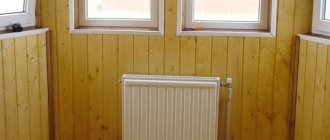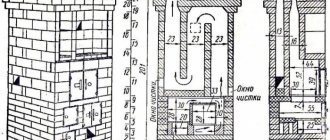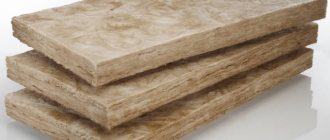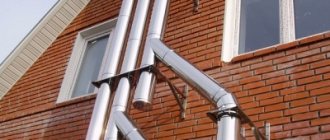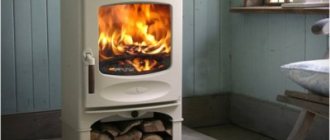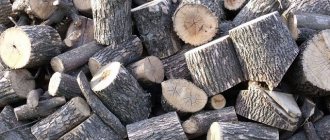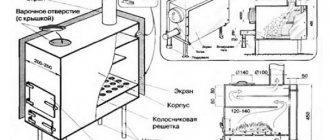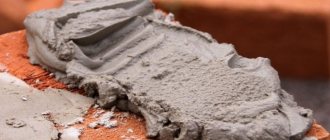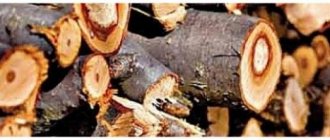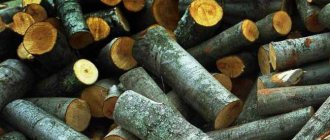What it is?
The ash pan is the same as the ash pan. An ash pan has long been included in the design of any stove. This is a chamber under the firebox grate, which is equipped with a metal tray.
When any material is burned in a furnace, ash and ash remain. For such waste, a special place is needed, and that is exactly what the ash pit is.
It's hard to imagine a stove without a blower. Then the entire structure ceases to function normally, and may even make no sense. After all, the ash pan is an important component, without which all excess waste would come out.
Dust from the firebox is transferred to the ash pan using a grate. The air thus gets to the fire and allows the fuel to burn as efficiently as possible. After which the air passes further and is removed into the chimney.
Primary requirements
As mentioned above, furnace fireboxes are available in any design. If the combustion chamber meets all regulatory and technical requirements, then the home owner does not have to worry that the design will consume a lot of fuel or poorly heat the house.
If you install modern stoves for a bathhouse or home, then they already have a properly thought-out system for convection of air flows in the area where the combustion process itself occurs. Moreover, they are equipped with spacious fireboxes that allow maximum storage of wood and coal, thereby saving fuel used, and at the same time being able to maintain a comfortable temperature in the house for as long as possible.
Based on the laws of physics, we can remember that a correct and high-quality combustion process occurs only if a sufficient amount of oxygen penetrates into the chamber. To implement this option, many different designs have been developed, but the grate has remained the most popular for decades.
This product is made of cast iron, and is subsequently installed inside the combustion chamber. It serves to maintain the poured volume of solid fuel used during the combustion process. The grille has holes located along its base, which facilitate the penetration of air flows into the chamber. To improve traction, there is a blower, through which ash is also removed.
Typical firebox design
The location of the grate should be in the middle of the firebox of a stove for a bathhouse or a country house, slightly below the firebox door, approximately two bricks apart, and the horizontal holes are directed along the combustion chamber.
Good to know: How to choose the optimal firebox for your fireplace
The slope of the grate is from two to five centimeters, which is determined by the size of the ovens. For better kindling and creation of proper draft, the element is mounted with a slope towards the chimney pipe. It is in this way that ideal conditions are created for uniform combustion of fuel inside a metal or brick stove, when the smoke flakes off the fire without collecting inside the firebox.
It is also important to observe this point: if the heating device is made of metal, then it is necessary to additionally design protection for the firebox so that it does not overheat, but in stone products, in order to build a chamber, it is better to use fireclay bricks that are resistant to high temperatures.
As for the fuel used, to purchase the required volume of material for the cold season, it is worth correctly calculating the number of days when the stove will burn, the area of the house and taking into account the thermal conductivity of the material. The highest indicators are coal (5500-6500 kcal/kg), peat gives off heat a little worse (2500-3500 kcal/kg), as well as firewood, but the latter must be dried under natural conditions.
Use of firewood
To correctly calculate the size and shape of the heating chamber, you need to focus on the height of the flame that comes from a particular type of fuel. If you can make a small firebox for coal, then larger dimensions are extremely necessary for peat and wood, since these substances burn actively.
Device and elements
A classic ash pan consists of the following components:
- door,
- lattice,
- under,
- ramp,
- bunker
The door is an element that may sometimes be missing. Usually it is opened slightly when the stove is heated, and a stronger fire is obtained. To relieve the pressure a little, close the door back.
Blower location
If there is no door, then increase the traction by pulling out the drawer. And so that ash and ashes do not fall out, the underside is made inclined.
Dimensions for firewood
Given the high flame trunk, experts recommend making a firebox for wood with a height of 80 cm to 1 m. If these parameters are not observed, the combustion of volatile substances will not occur, as a result of which these particles will settle in the chimney system.
Over time, a significant layer of soot will accumulate, which will lead to a decrease in the efficiency of the entire furnace. In order for the coals to roll, it is necessary to slightly bevel the corner parts of the firebox, which are in direct contact with the grate.
Good to know: How to dry a stove after laying and when it can be lit
Blower size
To build a stove vent with your own hands, you need to know its usual dimensions. Although there are no standards at all in size, there is one simple rule: the ash pan must be identical in size to the grate.
If the blower is smaller, then the soot will settle on the grate and will not allow air to pass to the flame.
If the ashlar does not have a door, then it is worth installing a drawer or tray. Here the dimensions are more clear. The width of the tray is the same as the distance from edge to edge of the blower. The length should be longer than the firebox.
You need to determine in advance which type of oven is right for you. When you know what exactly you want to cost, then you will find the right sizes for your type of stove. In a matter where there is no exact ideal, there may be room for your imagination.
Blower
The vent is the first air chamber in the furnace, which usually has a door. The blower chamber is laid out according to the dimensions of the grate. It can be wider than the grate and overlapped by overlap of rows of side walls up to the grate. Through the ash chamber, air enters the firebox through the grate; in addition, it serves to collect ash and other fuel waste.
Blower: 1 - blower chamber; 2 - blower door
The blower door can be of any size, but no larger than the blower door. Through this door it is convenient to remove ash from the wide ash chamber, and as for air, there is enough of it with a door even half as small as shown. Practice has shown that the best place for the blower door is on the second row of the stove masonry. The door is installed in the blower window, which is connected to the blower chamber. When the door is open, air rushes through the window into the ash chamber. The more the door is open, the more air will enter the ash pan and the better the fuel will burn. Air, especially coming from below, is needed to maintain fuel combustion. Hence the name - blower.
Sometimes the door is used to regulate the draft in the oven: the less the door is open, the less draft. It is not necessary to install a blower door, but it is advisable, because without it a draft can occur in devices that do not close tightly, such as valves. And then the heat will go out into the chimney, and the stove will release less heat into the room.
If there is no door, the draft is adjusted using a valve. The more the valve is open, the stronger the draft, and with it more air will enter the stove and the draft will be stronger, which means the fuel will burn better. If there is no door in the ash window, but there is a view, then the fuel will constantly burn with the same intensity, but with this intensity a lot of heat will go into the pipe, which the brick could absorb. The viewer cannot regulate either thrust or fuel combustion.
Let's say that the door is a few millimeters smaller than shown in the figure. In any case, the seams should be no more than 3-5 mm. To do this, the laying must be carried out from the door to the corner of the stove. The last seam turns out thicker than expected, and such a seam cannot be made. To maintain the thickness of the seams, you need to break off a quarter from a whole brick in the corner of the wall where the door is located. You will get a three-quarter and a quarter. Next, you need to break off a larger quarter, taking into account the thickness of the seam. It will seem to lengthen the whole brick. Instead of a whole brick, you need to put the first three-quarter and the second quarter - it will take the place of the thick seam. The masonry of the top row above this quarter will be made of a whole brick - it will block this quarter. If a thick seam is obtained near the door, then you need to do the same in this place.
If, because of the door, the firebox turns out to be several millimeters narrower and the flues are wider, then this will not affect the operation of the stove. In some areas of the country, stoves are installed without a blower at all. In these furnaces, the combustion doors have windows-openings for air intake instead of a blower. In such fireboxes, only wood and peat fuel burns, but the firewood is buried in ash and forms a lot of firebrands. When they burn out, the heat goes into the chimney, so the firebrands have to be pulled out of the firebox and placed in a bucket of water. Such ovens are made due to the lack of grates. If they exist, then they are installed above the blower chamber.
How to make an ash pan with your own hands?
In fact, constructing an ash pan is quite simple. It is enough to carefully study the structure of the furnace. You must follow these rules:
- Complete the drawing. A rough sketch will help in design.
- Prepare all the necessary materials, count how many there should be.
- Prepare your tools for work.
Guided by these superficial rules, you will be closer to the result. Now closer to the point:
Materials and tools
The design of each furnace can be individual. But the standard set of tools for work looks exactly like this:
- construction trowel,
- mallet,
- building level,
- plumb line,
- brick hammer,
- construction tape.
It is important to choose the right materials when making an ash pan. They must be fire resistant because they are right at the epicenter of a fire.
Experts say that the ideal material for the ash pan is steel (0.8 mm) . If there is no door, then the ash pit can be made of fire-resistant brick, like the rest of the stove structure.
Do not forget about the quality of the material for the stove. Naturally, joy will come from a product that will last you as long as possible. Price plays a very important role, but remember that cheap materials will have to be changed frequently and, in addition, will waste your time.
You will need some special materials for making. Definitely worth adding to the list:
- metal corner,
- chamber door,
- ash door,
- valves,
- refractory brick,
- fireproof mastic.
Then your shopping list will grow, depending on your desires and the complexity of your stove design.
It is worth buying the necessary materials in specialized stores (construction stores, more likely). The consultants there will tell you, if anything happens, which products are best suited for the job. You can also find materials for building a stove on the Internet and choose the most suitable ones.
Manufacturing instructions
The diagram shows the location of the blower in a brick oven
First, you need to lay out several rows of the oven without mortar to know whether everything will turn out exactly as required. Next, it is worth laying the lower rows so that the laying of the second completely covers the joints of the first. Next comes the blower and cleaning channels.
In the next two rows you should leave room for the blower and ducts and attach a door to each opening. To install them you will need to drill holes in the frames in all corners.
Next, you need to insert a soft steel wire into the holes that have formed and bring the end of each wire out. To strengthen the frame, wrap it with asbestos cord. Already during installation, it is worth placing each end of the wire in the solution.
Then you can safely lay out the top rows of the stove.
Stage 1
Stage 2
Stage 3
Parameters for hard coal
Experts note that the combustion process of wood fuel occurs when a smaller volume of oxygen is consumed than required by coal. Based on this, it is necessary to take into account the fact that the dimensions of the grate area in furnaces that use this type of fuel must be larger.
In the combustion area, in the combustion chamber, conditions for maximum oxygen penetration must be created. That is why a grate of the same size as the bottom part of the chamber is installed for coal.
Definitely a big coal fire.
As for the material used to make this element, it must be resistant to high temperatures, and also have a thickness of at least 4 cm. Experts note that if the stoves have cooking surfaces, then fuel can be added through the holes in them.
Another point is that the cross-sectional volume of the grate must be selected as large as possible, since during the combustion of coal a very high temperature is built up inside the chamber. Internal walls must be lined with fire-resistant bricks.
A characteristic feature of Anthracite coal is that the volume of volatile substances is significantly less than that of other coal or firewood. Accordingly, under such conditions, a small flame burns inside the furnace, which makes it possible to reduce the size of the firebox by almost half.
The immersion depth of the grate should be 30 cm, and to increase the efficiency when using coal of this grade, it is necessary to narrow the firebox in the area of the lower part of the grate. The fuel layer will be larger, which means heat transfer will increase.
How to clean a stove vent?
The presence of a door in the ash pit plays a positive role in regulating the pressure of the fire. But with cleaning we get the opposite result. The box is more convenient for cleaning. You can simply pull it out and shake it in the right place.
Ash box
If there is no drawer, then you will have to clean the oven manually. First, you should wait until the oven has completely cooled down. Next, using a brush, dustpan and bucket, you need to clean out all excess from the installation. There is nothing difficult about purchasing such cleaning products.
There are also special vacuum cleaners for fireplaces that can also be used in the stove. With their help, cleaning will not be difficult for you.
Often, due to a clogged oven, various types of problems occur. Example: The stove often leaks smoke. People who are not very familiar with the structure of the furnace and do not know how to operate it complain about caustic soot in the house or garage. The solution to the problem is incredibly simple: you need to regularly clean the ash pan, using the right tool.
How to build a stove
The layout diagram for a brick kiln is a sequence of actions. Compliance with them is an important condition. The material needs to be processed and precisely laid in order to avoid flaws as much as possible, which will then affect functionality. The stove is a heavy structure that requires a solid concrete foundation, which must be insulated with roofing felt. If the house is already based on a monolithic foundation, which makes up the entire floor area, there is no need to make a special foundation for the stove.
Work should begin by laying a row of bricks or large crushed stone, which is covered with mortar and smoothed. The next row will already constitute the oven. Experts advise that first, lay out the bricks in the place where it will presumably lie in order to adjust all the dimensions and exact location. Also, you need to soak each one in water for ten minutes. If fireclay is used, then it is enough to wipe it with a wet cloth. Before starting work, you need to calculate where the chimney will go. If construction takes place in an already completed building, it is worth calculating the location so that it is convenient to make a hole in the roof and interfloor ceilings.
The first row is laid out so that the horizontal lines are oriented along one of the walls. In the place where the stove is as close as possible to the walls, you need to lay a second brick. This will ensure safety from fires. A metal grate is installed in place of the firebox. There will be several of them in the design. One of them will divide the firebox with a compartment for collecting ash. In the second row, you should take into account the free space for the chimney and the connector in the masonry under the lower door. There will be two of them. The small one is for removing ash, the second one opens the firebox and is large in size. The doors are securely fixed with wire between the bricks and the joint is smoothed with mortar. After the third row, you need to lay out two rows of bricks on a spoon, cover it with a row of fireclay refractory bricks. This will serve as the base for the firebox grate. After this, the door of the future firebox is strengthened, and its walls are laid out. The vault is formed from fireclay bricks. A fireplace will be located next to the firebox.
This design requires significant reinforcement. This can be achieved by laying horizontal metal corners, securing them with fire-resistant bricks. The fireplace grate is flush with the masonry. When this part of the stove is ready, they begin to lay out the chimney and divide it into wells. The fireplace arch is placed so that it goes to the chimney. At this stage, after the formation of the first row of its walls, the space is divided into wells, doors are secured, with the help of which soot is removed from the chimney. When everything is ready, the bricks that formed the wells, previously removed for convenience, are returned and secured with mortar. The chimney is laid out right up to the ceiling, periodically adding reinforcement
It is very important to create empty space and a cornice under the top. A sheet of tin, secured by two rows of masonry, is placed on top of the wells
This work is already being done in the attic. Here the chimney is divided into two compartments, and valves are installed to each of them. The walls of the chimney that comes from the stove need to be strengthened and when it reaches the roof, bring it out a little above the ridge.
Traditional scheme for supplying air to the firebox
By traditional air supply we mean the most common method of supplying air through the lower part of the furnace - the blower. This is not only the most common way of organizing the breathing of a furnace, but also not the most rational. The fact is that by opening the summer valve, when the most powerful draft is formed in the furnace, heat from the room in which the furnace is being heated literally escapes into the chimney. Naturally, colder air from outside begins to enter the room. As a result, the room quickly loses temperature and cools down.
It’s another matter when the furnace is equipped with an air duct system, for example, taking oxygen from the basement or directly from the street. In this case, the temperature in the room does not drop during kindling, but the draft does not decrease in any way.
This innovative scheme allows you to heat a room more efficiently, significantly reducing heat loss by reducing the circulation of atmospheric air inside it, but if the stove is not designed to burn light gases, it will still not be possible to achieve maximum savings.
What requirements must fireboxes meet?
When creating any stove, you need to remember important and essential recommendations. It is especially important to observe the correct dimensions, since they are the most important characteristics of the products. Therefore, it is necessary to make a preliminary calculation of the elements using the correct formulas and taking into account all factors .
The most important requirements:
- The width of the firebox of almost any stove should be no less than 25 cm , and no more than 40 cm . These parameters are considered optimal for household stoves, the power of which is considered average. These devices are the most common. For a sauna stove, which usually has high power, the firebox width is most often slightly more than 40 cm.
- If you need to determine this parameter for a fireplace, then it depends on the size of this element. The calculation is very simple , since, as a standard, the width of the firebox should be approximately equal to the width of the firebox door.
- If the dimensions differ significantly, the rate of heat flow may be significantly reduced or the fuel will burn at a slower rate. In any case, if the furnace parameters are incorrect, you can expect a decrease in the efficiency of its use .
The height of each firebox is the second most important indicator. There is a minimum size, which ranges from 80 to 100 cm . Often, when creating a furnace, it is impossible to achieve these parameters, and in this case, the height can be increased due to the afterburning chamber. If this parameter is less than 80 cm , then the flammable gases generated during the combustion of fuel will not be able to burn.
